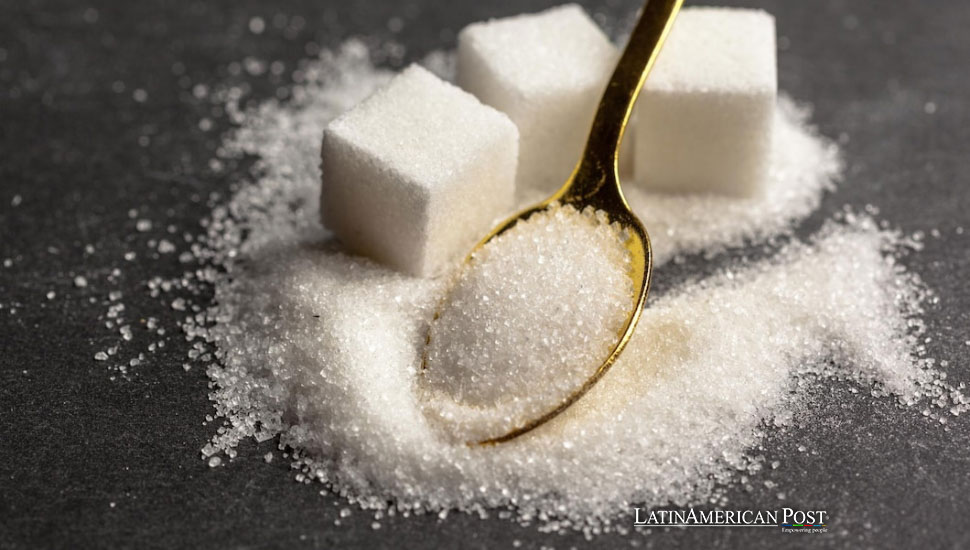Cuban Sugar Industry Faces Crisis Amid Historical and Economic Challenges

The BBC reports that Cuba’s sugar industry, once the pride of the Caribbean, is now in crisis. Historical mismanagement, economic embargoes, and modern challenges have created an uncertain future for this once-thriving sector.
As the BBC reports, the men of the Yumuri sugar co-operative in Cuba have worked the cane fields around Cienfuegos since they were old enough to wield a machete. Cutting cane is all Miguel Guzmán has ever known. He comes from a family of farmhands and started the challenging, thankless work as a teenager.
For hundreds of years, sugar was the mainstay of the Cuban economy and the cornerstone of another national industry, rum. Older Cubans remember when the island was essentially built on the backs of families like Mr. Guzmán’s. Today, though, he readily admits he has never seen the sugar industry as broken and depressed as it is now—not even when the Soviet Union’s lucrative sugar quotas dried up after the Cold War.
Historical Context of Cuban Sugar
Since the colonial era, sugar production has been integral to Cuba’s economy and identity. Introduced by Spanish colonizers, sugar plantations flourished due to the island’s favorable climate and fertile soil. By the 19th century, Cuba had become the world’s leading sugar producer, a status that persisted into the 20th century. The industry’s significance was not merely economic; it shaped Cuban society’s social and cultural fabric.
The Cuban Revolution in 1959 brought significant changes as the new government nationalized the sugar industry. Initially, the state-managed system maintained high production levels, supported by favorable trade agreements with the Soviet Union. However, the collapse of the Soviet bloc in the early 1990s left Cuba’s sugar industry without its primary market, leading to a period of decline.
Current Economic Challenges
Today, spiraling inflation, shortages of essential goods, and the decades-long US economic embargo have created a dire economic outlook across Cuba. These challenges are particularly acute in the sugar trade. “There are not enough trucks, and the fuel shortages sometimes mean several days pass before we can work,” says Guzmán, waiting in a tiny patch of shade for the Soviet-era lorries to arrive. As men and machinery lie idle, the lost hours of harvest have acutely hurt production levels. Last season, Cuba’s sugar production fell to just 350,000 tonnes of raw sugar, an all-time low and well below the 1.3 million tonnes recorded in 2019.
Guzmán, recognized as one of the fastest cutters in his team, says his wages barely buy anything anymore. “But what can we do? Cuba needs the sugar,” he remarks. The stark reality is that Cuba now imports sugar to meet domestic demand—a far cry from the glory years when Cuban sugar was the envy of the Caribbean and exported around the world.
Structural Decline and Government Priorities
Inside Ciudad Caracas, a 19th-century sugar mill near Cienfuegos, the air is thick with the overpowering smell of molasses. As obsolete, rusting cogs grind tonnes of sugarcane into pulp and juice, workers acknowledge it is one of just two dozen working sugar mills in Cuba. “That’s four more than originally planned for this season, thanks to the hard work and effort of the workers,” says Dionis Pérez, communications director of the state-run sugar company Azcuba. “But the other 29 are at a standstill,” he acknowledges.
The slump in sugar production has profound implications for other parts of the Cuban economy, including its export earnings from rum. “We’re producing the same quantity of sugar Cuba produced in the middle of the 19th century,” says Juan Triana of the Centre for Studies of the Cuban Economy in Havana. The “maximum pressure” policy by former US President Donald Trump, which ratcheted up the trade embargo, has worsened the situation. However, the issues facing Cuban sugar are not solely the fault of the US embargo. Years of chronic mismanagement and underinvestment have also wrecked the once-thriving industry. Today, sugar receives less than 3% of state investment as the Cuban government backs tourism as its leading economic driver instead.
Emergence of Private Entrepreneurs
One man who can still get his hands on enough sugar is Martin Nizarane, part of a new breed of Cuban private entrepreneurs. His company, Clamanta, produces yogurt and ice cream in a factory outside Havana. As Nizarane shows sacks of sugar imported in bulk from Colombia, he hopes to double production soon. Cuban President Miguel Díaz-Canel has hailed the business as a model for the future.
To many, that praise from the top amounts to a paradigm shift. It may still be considered a dirty word by the Cuban state, but this is capitalism, pure and simple, even if Nizarane displays his revolutionary credentials by adorning his office with photographs of him hugging the late revolutionary leader, Fidel Castro. “I am not an employee of the Cuban state. He retorts that This non-state form of production sells to other non-state entities and state-owned companies,” he retorts. “The state treats me like another private entrepreneur with no special privileges whatsoever.”
Broader Economic Struggles
Sugar’s demise is just one part of Cuba’s faltering economy. On March 1, amid growing inflation, the government imposed a five-fold price increase on subsidized fuel at the petrol pumps. Officials argued that the government could no longer afford such high subsidies on fuel. Manuel Domínguez, a resident, expressed his frustration while queuing to fill up his tank. “There’s no relationship between what we earn and the prices we see—whether that’s fuel, food in the shops, or anything else. There needs to be a correlation between our wages and what things cost because, right now, for the average Cuban, fuel is simply unaffordable.”
Following the rise in petrol prices, economy, and planning minister Alejandro Gil Fernández was arrested for alleged corruption. Some think he has been made a scapegoat for the state of the Cuban economy. Either way, it was an extraordinary—and very public—fall from grace. Most think it will take more than one ministerial head to roll to pull Cuba from its economic woes.
Back in the sugarcane fields of Cienfuegos, the cutters carry out their grueling work with little optimism. Invariably, when talking about the sugar industry in Cuba, someone will quote the island’s famous refrain: “Without sugar, there’s no country.” For Cuban economist Juan Triana, that idea is being tested to its limit. The industry’s decline has economic, cultural, and historical implications. Sugar production has been intertwined with Cuba’s identity for centuries, and its current state reflects broader struggles within Cuban society.
Reviving the Industry
Reviving the Cuban sugar industry will require significant investment and structural reforms. Addressing the mismanagement and underinvestment that have plagued the industry for decades is crucial. Modernizing equipment, improving logistics, and ensuring a stable fuel supply are essential. Additionally, fostering private entrepreneurship within the agricultural sector, as seen with Martin Nizarane’s business, could inject much-needed dynamism into the industry.
The Cuban government must also balance its focus between tourism and other critical sectors like agriculture. While tourism is an essential economic driver, neglecting traditional industries such as sugar could lead to further financial instability. A diversified approach that supports multiple sectors may provide a more sustainable economic model for the future.
The Cuban sugar industry is at a crossroads, facing historical and contemporary challenges. The impact of the US embargo, combined with internal mismanagement and economic struggles, has created a precarious situation. However, with strategic reforms and investment, there is potential to revive this once-thriving sector.
Also read: Cuban Recruitment for Russian Army: Economic Desperation at Play
Argentina Durán’s efforts to revive forgotten Mexican classical music compositions serve as a reminder of the importance of preserving cultural heritage. Similarly, the revival of the Cuban sugar industry requires a renewed commitment to addressing past mistakes and investing in the future. By leveraging the resilience and ingenuity of its people, Cuba can work towards a more stable and prosperous future for its sugar industry and beyond.
As Cuba navigates these complex challenges, the story of its sugar industry will continue to be a testament to the island’s enduring spirit and the importance of its cultural and economic heritage.





